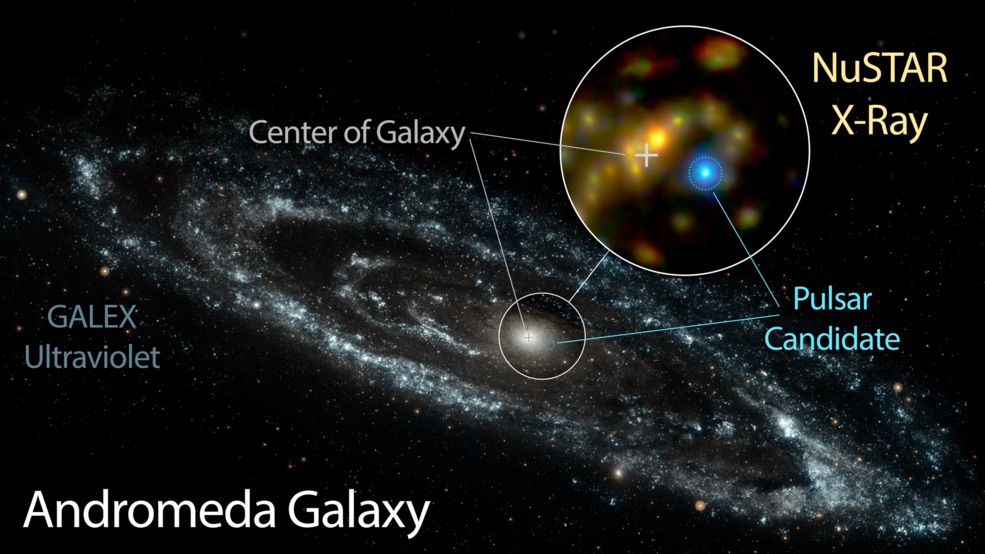
 Credit: NASA/JPL-Caltech/GSFC/JHU
Credit: NASA/JPL-Caltech/GSFC/JHU
Connecting the Dots
The sky is filled with unidentified things, points of light whose nature is unclear. Some are eventually resolved as normal stars, once clear images can be obtained. Others become more mysterious as the come into better view. Such is the case of a strange object in the Andromeda galaxy called Swift J0042.6+4112. This object was discovered by the Burst Alert Telescope on the Swift Gamma-ray burst observatory. The Burst Alert Telescope, or BAT, is designed to detect high energy sources over wide regions of the sky. The BAT detected Swift J0042.6+4112 as an interesting high energy source of radiation near the center of the Andromeda galaxy. But the BAT has difficulty separating individual sources if they are too close together. Analysis of the BAT images and other observations with XMM-Newton and the Chandra X-ray Observatory (which have better imaging capability but little sensitivity at high energies) revealed a large number of low-energy sources near the BAT source, so that it was not clear if one was the high energy BAT source, or if the BAT source was the combined high-energy emission of all these sources. Enter NuSTAR, the first satellite observatory to be able to directly image the high energy sky. The image above shows, superimposed on an ultraviolet image of the Andromeda galaxy, the NuSTAR image, with the high-energy source shown in blue. The NuSTAR high-energy image of Andromeda was able to pinpoint the counterpart of Swift J0042.6+4112, and revealed that the BAT source seems to be a single object. But what type of object? Analysis of high-energy observations, along with high resolution optical observations from the Hubble Space Telescope, have still failed to conclusively identify the true nature of this strange source. The analysis indicates that the most likely candidate is some type of rare system involving a neutron star or pulsar. Detection of X-ray pulsations or orbital motion from the system would help finally resolve the nature of this still mysterious source.
Published: March 27, 2017
<
HEA Dictionary ● Archive
● Search HEAPOW
● Other Languages
● HEAPOW on Facebook
● Download all Images
● Education ● HEAD
>

Each week the HEASARC
brings you new, exciting and beautiful images from X-ray and Gamma ray
astronomy. Check back each week and be sure to check out the HEAPOW archive!
Page Author: Dr. Michael F. Corcoran
Last modified Monday, 26-Feb-2024 17:22:17 EST


